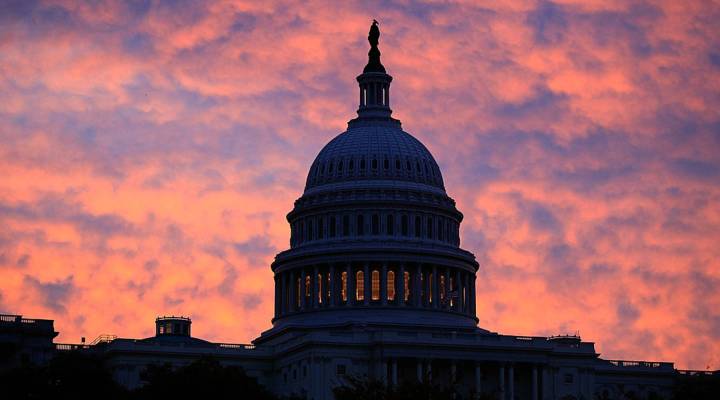
What you need to know about the sequester and Trump

We almost pulled it off.
Kai and Molly got all the way to the end of this week’s Make Me Smart Explainathon, answering questions on a variety of topics, before they got tripped up. Listener Pam Pochel called in to ask if the Trump Administration’s fiscal policies take the sequester into account.
Before we answer that, though, we should remind ourselves what sequestration is. As part of a debt limit fight (of course), Congress passed the Budget Control Act late in 2011. With it came a whole raft of budget cuts that, ideally, would have never gone into effect.
Essentially, Congress was telling its future self “cut spending, or we’ll cut it for you.” The cuts amounted to about $1.2 trillion over nearly a decade, evenly split across years and programs. They were meant to take effect if lawmakers couldn’t agree on a way to reduce the deficit by the same amount over the same time period. The Washington Post has a good explainer.
“The theory was that the threat of the sequester would then force Congress to get its act together on government spending and how we do things in this country, and make rational decisions,” Kai said on the podcast. “As we all know that didn’t happen.”
It isn’t the biggest cut ever, not even close, but the timing wasn’t great and the sheer breadth of the cuts was killer. In the spring of 2013, nearly every government department and program was hit equally, to the tune of about 7 to 10 percent. Cuts were dispassionate and far-reaching. You can see it all over. National Parks funding? Cut. Government child care and K-12 programs? Big dents in both. Pentagon workers? Furloughed. We did a whole series at the time on cuts big and small called “Six Degrees of Sequestration.”
In the years since, Congress has worked out some cuts to dull sequestration’s sting and stay under budget caps, but sequestration is still in effect. The Congressional Budget Office analyzes spending and the mechanics of sequestration in regular reports.
When Kai and Molly talked to Pam on Tuesday we didn’t know what Republicans’ tax proposal would look like, but we suspected it wouldn’t mention sequestration. It didn’t. Trump also struck a deal with Democrats earlier this month delaying debt ceiling and budget negotiations to December, giving everyone more time to hammer out how the new budget will or won’t engage with sequestration.
However, the Atlantic pointed out back in March that Trump’s initial budget proposal seems to willfully ignore the sequester altogether:
To appropriate funding as the White House wants, Trump would need to repeal or subvert sequestration. To do that, he would need to overcome the threat of a Senate filibuster. To do that, he would need to woo some number of Democrats. To do that, he would need to overhaul his budget figures. And in doing that, Trump would almost certainly lose too many Republican votes to pass his budget.
So the negotiations will go on, at least until 2021, when the whole thing finally finishes. That actual sunset date was the other thing Kai and Molly were blanking on, so Pam: consider yourself made smart.
For more on Congress’ constant budget drama, check out the video below.
There’s a lot happening in the world. Through it all, Marketplace is here for you.
You rely on Marketplace to break down the world’s events and tell you how it affects you in a fact-based, approachable way. We rely on your financial support to keep making that possible.
Your donation today powers the independent journalism that you rely on. For just $5/month, you can help sustain Marketplace so we can keep reporting on the things that matter to you.












